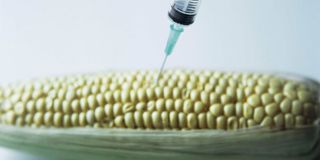GMO foods are no panacea to raging hunger

Without credible and independent research on the safety of GM foods, consumers are on their own.
The Cabinet’s lifting of the 2012 ban on importation and cultivation of genetically modified organisms (GMO) has, predictably, sparked controversy.
The debate on genetically modified foods rages on in global research circles as regards their health and safety and there is no consensus in sight. Without credible and independent research on the safety of GM foods, consumers are on their own.
As opposed to the one that declared the ban, the recent Cabinet memo profiled GMO technology as the panacea to the challenges in Kenya’s agricultural productivity. In effect, it implied that the country faced a dilemma: Adopt GM agriculture or resign to a life of hunger and starvation. Nonetheless, the converse is true: The country has a host of other viable solutions in the pursuit of food security.
For starters, the country’s agriculture is predominantly rain-fed. The prevailing food scarcity is attributable to a spell of four poor rainy seasons in a row over the past two years. Consequently, progressively edging out perennial reliance on rain-fed agriculture is key to promoting productivity.
The Kenya Vision 2030 blueprint targets an irrigated acreage of 143,000 hectares from the arid and semi-arid lands (ASALs). Thankfully, land in the ASALs is held under the communal land tenure, the trustees being the respective county governments. Agriculture being a devolved function, it is feasible to assemble the required acreage through partnership with the local communities.
Research indicates presence of aquifers spanning both Turkana and Marsabit counties, in the Loitikipi and Merti regions, respectively, with capacity to provide the required water for irrigation.
Additionally, 30 per cent of the maize harvested in the country is lost through poor post-harvest handling practices. Pairing farmers with shared extension services has proved to be effective in reducing this wastage, as can be attested by the Ethiopian and Malawian model of maize farming.
Equally, Kenya in particular and Sub-Saharan Africa (SSA) in general should address the colonial displacement of indigenous food crops such as yams, cowpeas, millet and bananas for cash crops like tea and coffee, exotic wheat, maize and rice.
Due to favourable climate, Africa has an untapped comparative advantage in the commercial production of indigenous and traditional food crops. In 2013, FAO reported that 95 per cent of the world’s supply of yams (48 million tonnes) was produced in the southern Guinea ecosystem spanning Cote d’Ivoire, Nigeria, Benin, Togo and Ghana.
In the same period, SSA produced a meagre five per cent of the global maize supply, three per cent of wheat and two per cent of rice. This is indicative of the massive potential for Africa to feed itself by specialising in endemic food crops. Agricultural research and development should, therefore, be geared towards improvement of the indigenous seed varieties, elimination of post-harvest losses and enhancing value addition of indigenous crops.
Mr Kinuthia is a law student at the University of Nairobi. [email protected].




